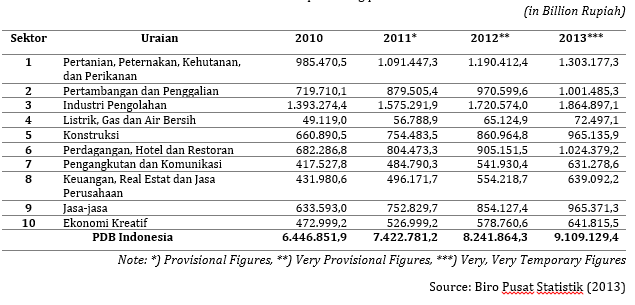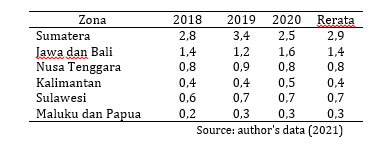Author Guidelines
GENERAL INSTRUCTIONS
The manuscripts can be accepted/published in the Indonesian Treasury Review (ITRev) if the author meets the following requirements:
- The paper must be the author's original work that has never been accepted/published in any journal. Authors are responsible for ensuring the originality of the content of their paper and shall avoid plagiarism.
- Papers are written in English. Articles are typed in MS Word/similar program with the format [.docx] on A4 paper with a 2.5 cm top margin, 2,5 cm bottom edge, 2,5 cm right, and 2.5 cm left. Papers must be written in Cambrian letters, size 10, and single-spaced. (Article templates can be downloaded here)
- Authors must first create an account and log in to https://itrev.kemenkeu.go.id before submitting manuscripts in digital format (.docx) via the Submissions menu. Additionally, they are required to upload mandatory supporting documents, such as the Originality Statement, which has been stamped (can be downloaded here), the Scientific Work Explanation Sheet (can be downloaded here), and the Author Identity Form or Curriculum Vitae (can be downloaded here).
- The omission of required documents may lead to delays or the inability to proceed with the manuscript's review and selection process
PAPER STRUCTURE
The full paper manuscript contains 6,000 and 8,000 words, including abstracts, references, tables, figures and graphics. Articles are written by following the following systematics:
Titles
The article's title must be clear, concise, and straightforward, and no more than 14 words. The title is written in capital letters, centre, Cambria, size 14, bold.
Author's name
The author's name is written without an academic degree. An article writer can be more than one author. The author also includes the author's affiliation (institution) and the address city of the institution. The name of affiliation/institution is written in full (not an acronym). For correspondence addresses, it is recommended to use the email address of the first author.
The structure of writing the article title and author's name is (a) article title, (b) first author's name, (c) first author's affiliation, (d) first author's institution address, (e) first author's email address. For the second author and so on, follow the order as the first author.
An example of writing the title and author's name can be seen in the article template.
Authors are expected to consider carefully the list and order of authors before submitting their manuscript and provide the definitive list of authors at the time of the original submission. Any addition, deletion or rearrangement of author names in the authorship list should be made only before the manuscript has been accepted and only if approved by the journal Editor. To request such a change, the Editor must receive the following from the corresponding author: (a) the reason for the change in author list and (b) written confirmation (e-mail, letter) from all authors that they agree with the addition, removal or rearrangement. In the case of addition or removal of authors, this includes confirmation from the author being added or removed.
Only in exceptional circumstances will the Editor consider the addition, deletion or rearrangement of authors after the manuscript has been accepted. While the Editor considers the request, publication of the manuscript will be suspended. If the manuscript has already been published in an online issue, any requests approved by the Editor will result in a corrigendum.
Abstract and Keywords
The Abstract’s length is not more than 250 words. The abstract is written in one paragraph that contains the background, research objectives, concepts/theories, methods, results/findings, and conclusions/implications of the study. Abstract with 3-5 keywords, with a comma (,) and in alphabetical order.
Introduction
The Introduction consists of no more than four concise paragraphs. It should also contain background and research objectives that explain phenomena and research problems. It should also be related to previous studies, especially research gaps or limitations from previous studies. The author's hope to fill in research gap/limitations, or the author must briefly explain the purpose of writing at the end of the Introduction. The Introduction is in the form of a narrative and does not use numbering.
In the Introduction section, the author(s) should include a summary box called Applications for Practice that contains (a) the most important finding(s) for policymakers, and (b) recommendation(s) for policy formulation and implementation. It should be written in a clear and simple language and presented in bullet points. It should not use special terms commonly used in scientific papers. The word count should be between 50 and 100 words.
Literature Review
This section describes the theoretical basis used as the basis for analysis in research. This section also contains previous studies, research gaps or ummah, and debates and developments in the concepts or theories used. The literature used must be under the topic of the article being written. The author can provide a logical basis for developing research hypotheses or propositions and research models.
Research Methodology
The Research Methodology includes the type of research, research design, population and sample, data collection techniques and instruments, measurement and operational definition of variables, and data analysis procedures.
Results and Discussion
Results are research findings and should be clear and concise without opinions. This section contains the results of data analysis or statistical descriptions required. Authors using quantitative research methods are required to provide a descriptive statistical table. Tables/illustrations are placed in this section (at most six tables/illustrations) with a brief title. Authors can present an explanation/analysis of each table/illustration contained. Tables/illustrations that are more than one page in size can be placed in the Appendix.
The Discussion section is the author's interpretation of the research findings that can answer the limitations/research gaps of previous research and not repeat the research findings. The Discussion section includes how the research results related to the research objectives (what)? Do the authors provide a scientific interpretation of each finding presented (why)? Moreover, are the research results consistent or contradictory to the research results from other researchers (what else)?
Conclusion
The Conclusion section is the answer to the research objectives. The conclusions include a summary of the research, the contribution/implications of the study, the limitations of the study, and as far as possible, suggest potential areas for further research. The Conclusion section is written in a clear, concise, and does not re-quote previous research. In the form of a narrative, the conclusions presented do not use numbering and are not more than two paragraphs.
Acknowledgements
Authors can include acknowledgements in their articles, including information about financial support received by authors in their research. The Acknowledgement section is loaded into the manuscript after the author gets feedback on the review results from Mitra Bestari or reviewers.
References
This section contains reference sources cited by the author, both from books, book chapters, scientific articles, official releases from institutions relevant to the research. References used must consist of at least 15 up to date references, and 80% of references used not more than the last ten years. There are at least five articles (and/or 50%) references from reputable international journals. Authors should not use online news sites, blogs and Wikipedia as references.
The References are written using the American Psychological Association (APA) writing format. For convenience and standardization of reference writing, authors must use reference manager tools such as EndNote, Zotero, Mendeley, or RefWorks.
The writing format is (a) hanging indent 1 cm, (b) Cambria font size 10, and (c) 12 pt line spacing. An example of writing a reference is as follows:
Single Author Book:
Gore, A. (2006). An inconvenient truth: The planetary emergency of global warming and what we can do about it. Emmaus, PA: Rodale.
In-text reference: (Gore, 2006)
Book with two authors:
Michaels, P. J., & Balling, R. C., Jr. (2000). The satanic gases: Clearing the air about global warming. Washington, DC: Cato Institute.
In-text reference: (Michaels & Balling, 2000)
Book with Editor as Author:
Galley. K. E. (Ed). (2004). Global climate change and wildlife in North America. Bethesda, MD: Wildlife Society.
In-text reference: (Galley, 2004)
Brochures or Pamphlets:
New York State Department of Health. (2002). After a sexual assault. [Brochure]. Albany, NY: Author.
In-text reference: (New York, 2002)
Books with Anonymous Author:
Environmental resource handbook. (2001). Millerton, NY: Grey House.
In-text reference: (Environmental Resource Handbook, 2001)
Articles on Book Reference:
Greenhouse effect. (2005). American heritage science dictionary, Boston, MA: Houghton Mifflin.
Schneider, S. H. (200). Greenhouse effect. World book encyclopedia (Millennium ed. Vol. 8, PP. 382-383). Chicago, IL: World Book.
In-text reference: (Greengouse effect, 2005)
(Schbeider, 2000)
Articles from Magazines:
Allen, L. (2004, August). Will Tuvalu disappear beneath the sea? Global warming threatens to swamp a small island nation. Smithsonian, 35(5), 44-52.
Begley, S., & Murr, A. (2007, July 2). Which of these is not causing global warming? A. Sport utility vehicles; B. Rice fields; C. Increased solar output. Newsweek, 150(2), 48-50.
In-text reference: (Allen, 2004)
(Begley, 2007)
Articles from Newspapers:
College officials agree to cut greenhouse gases. (2007, June 13). Albany Times Union, p. A4.
Landler, M. (2007, July 2). Bush's Greenhouse Gas Plan Throws Europe off Guard. New York Times, P. A7.
In-text reference: (“College Officials”, 2007)
(Landler, 2007)
Journal Articles with Advanced Page Numbers:
Miller-Rushing, A. J., Primack, D., & Mukunda, S. (2006). Photographs and herbarium specimens as tools to document phonological changes in response to global warming. American Journal of Botany, 93, 1667-1674.
In-text reference: (Miller-Rushing, Primack, & Mukunda, 2006)
Website:
The United States Environmental Protection Agency. (2007, May 4). Climate Change. Retrieved from the Environmental Protection Agency website: http://www.epa.gov/climatechange
In-text reference: (United States Environmental, 2007)
Gelspan, R. (2007). The Heat Is Online. Lake Oswego, Or: Green House Network. Retrieved from the Heat is Online website: http://www.heatisonline.org
In-text reference: (Gelspan, 2007)
Translated Book:
Kotter, J.P., (1997). Leading Change: Menjadi Pionir Perubahan, (Alih Bahasa, Joseph Bambang MS). Jakarta: PT Gramedia Pustaka Utama
In-text reference: (Kotter, 1997)
Thesis/Dissertation:
Lengkong, J.S.J., 2004. Strategi Perbaikan Sekolah Berdasarkan Perspektif Guru (Studi Kasus pada Tiga SLTP di Kabupaten Minahasa. Disertasi, Tidak Dipublikasikan, PPs UM.
In-text reference: (Lengkong, 2004)
TABLE/ILLUSTRATION FORMAT
Each table/illustration must be referred to in the narrative in the article manuscript. Tables/charts contained in articles should be editable tables/charts. Every table/illustration must be seen/read clearly (not blurred or stretched). Uploaded image files must be editable, in [.jpg] or [.PNG] picture format, and with a minimum size of 700 x 700 pixels. Graphics/images are referred to as illustrations.
The decimal number in the table/charts is not more than three decimal digits with the smallest letter size 8. Each letter in the table should be written in black colour only. The tables/charts are colourless (only black/white). The title of the table/illustration is centred and numbered using Arabic numerals. The title of the table/illustration should not be bolded. Between the title and the table/illustration are spaced one line apart. Only horizontal lines are used in tables to distinguish column headings from the body of the table and directly above and below the table. Tables/illustrations must be embedded in the body of the manuscript and are not provided separately (except tables/illustrations that are more than one page in size can be put in the Appendix).
Tables should not be in the images form to facilitate editing. Each table/illustration is inserted into a "text box" so that it can be easily moved, and placed at the top or bottom of the page. If the table/illustration size takes up two or more columns, it should be placed on the next page.
The way of numbering tables/illustrations in the body of the manuscript is different from the tables/illustrations in the Appendix. For tables/illustrations in the manuscript's body, they are numbered according to the order in which the tables/illustrations exist. Tables/illustrations in the Appendix should be numbered according to the order in which the table/illustration is attached. An example of writing the title and how to number the table/illustration is as follows:
Example of tables/illustrations in the body of the manuscript:
Table 1. Gross Domestic Product 2010-2013
Based on the prevailing price
Table 2. Number of poor people per zone
(in millions)
Chart 1. Responden


